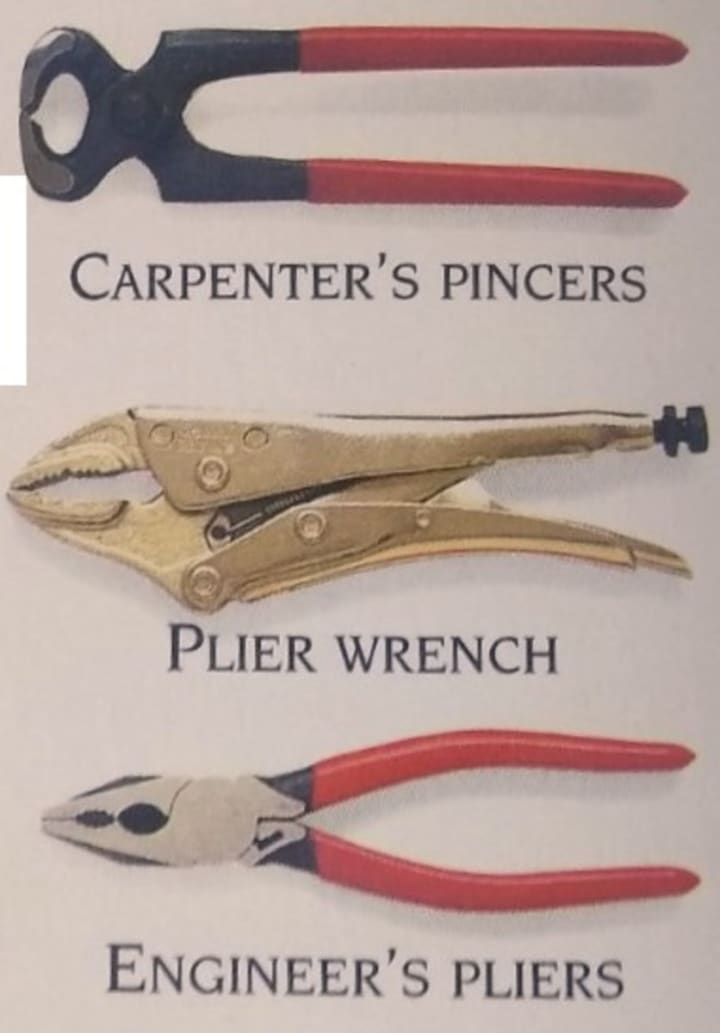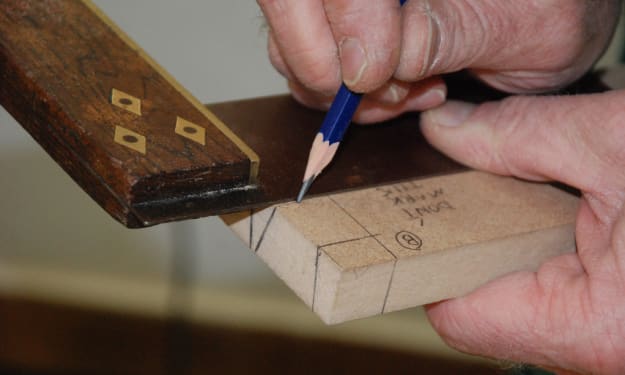Complete Essential Household Tool Kit
Equipping Your Home for Everyday Fixes and Maintenance

(Please ignore the bad lighting/editing or white cut-offs done on the images in this article, as the images are taken either from a very old book from my library or from a CCL raw image database)
(Links to certain articles are highlighted in a different colour. Click the link and it will take you the article accordingly)
Household Tool Kit
Always try to buy and use high-quality tools when carrying out home improvements. Good tools will greatly ease the task of decorating your home, so it is always best to purchase a few well-made tools rather than many poor-quality ones. You Do not need to acquire your whole tool kit at once.
Collect the requisite tools when needed as you tackle different decorating tasks. A comprehensive range of hand and power tools is a good investment, so clean and store all your tools carefully after use to keep them in good condition. The more specialized tools can be rented from your local do-it-yourself shop.
Stepladder
A stepladder is essential for many home tasks. To work close to ceilings, use a stepladder 2 m (6-1/2 ft) tall. When choosing a stepladder, consider the safety and comfort aspects first. Stability and wide sturdy threads with a non-slip surface are essential, and a platform at the top is useful as a rest for tools and materials.

Portable Workbench
A rigid, portable workbench that folds flat for storage is a key appliance. A basic portable bench will clamp materials to be cut, painted, or worked on in some other way, and serves as a useful platform for cans of paint. More comprehensive benches inside a marked edge for measuring parallel lines for guiding materials to be cut.

Markers
A good general purpose marker is a carpenter's pencil. A fine pencil is useful for delicate assignments, and a china-graph pencil is best for marking tiles and glass.

Levelling
For true verticals, use a plumb line or a large spirit level. A small spirit level will also be useful. A combination square is a versatile tool for measuring angles and short lengths. Right angles can be checked with a try square. A steel tape measure, rule, and straight edge are vital for most work.

Drills
When buying a power drill, make sure that the motor is powerful enough for all tasks, and look for features such as hammer actions for boring walls, reversible rotation, and variable speeds. Some drills with very low speed settings can be used for putting in screws. Use a selection of general-purpose and masonry drill bits.

Hammers and Mallets
A claw hammer is indispensable for general-purpose tasks and for levering out a exposed nails or tacks. Use a cross-peen hammer for delicate applications, and a club hammer for heavy work. A carpenters mallet is used only to drive wooden-handled tools, such as chisels.
Set nails into wood with a punch. Use masonry nails for fixing into solid walls and floors. Lost-head nails are best when appearance is important. Flat-head nails should be used when strength is necessary.

Grippers
Have a selection of pliers and grippers available for tasks where you need a good grip. Carpenters pincers will remove nails and tacks with ease from wood. A plier wrench is designed for clamping onto and turning. For general-purpose work, you should use a strong pair of engineer's pliers with curved toothed jaws and cutting blades.

Cutters
A 510 mm (20 in) panel saw is a good saw for lengths of timber. For cutting sheets of hardboard or plywood, you will need a tenon saw, and for cutting metal use a hack-saw. Buy two or three wood cutting chisels of varying sizes up to 25 mm (1 in) wide, and a bolster chisel for chopping masonry, easing off tiles, or lifting floorboards.
For cutting light materials, have two sizes of household scissors and a craft knife with replaceable sharp blades. For safety, select a model with a retractable blade.

Scraping and Filling
Filling knives are used to smooth filler into cracks and holes. Scrapers are indispensable for removing old paint and wallpaper. Prior to scraping, perforate wallpaper with a spiker or scraper. A steam stripper is useful for removing large areas of a wallpaper.
A decorators sponge has a host of uses when painting and wallpapering. Clean metal with a wire brush. Abrade surfaces with a wire wool, or sandpaper wrapped around a cork block.

Screwdrivers
There are various screwdrivers for slot-head and cross-head screws. General screws and woodscrews are available in different finishes and shapes. Mark a pilot drilling hole with a bradawl. Use a solid or hollow wall-plug that matches the screw size when making a wall fixing. For minor electrical tasks, use an electrician's screwdriver.

Miscellaneous
Use a metal detector before drilling to locate objects hidden within a wall. For protecting clothing and to provide a useful pocket for tools, wear a carpenters apron. When handling caustic materials, protect your hands with rubber gloves. Fabric gloves are useful for for general decorative tasks.
Cover furniture with dust sheets. Plastic safety goggles will protect your eyes. Use a mask when working in a dusty area. Masking tape is available in several widths and strengths. String and a staple gun are useful for many tasks. Use a robust builder's bucket.

About the Creator
Temoor Dar
💡Topic: Entrepreneur and Writer💡
♟️Hobbies: Traveling, Poems, Playing Chess and Solving Puzzles♟️
🎂Born: July 7, 1991🎂
📍Born in Stockholm, Sweden, and now a Londoner since 1996📍
📚Lifelong Learner📚
🌟Wisdom from Mentors🌟






Comments (1)
So many tools